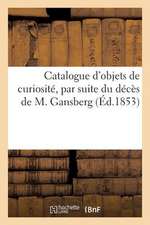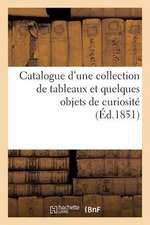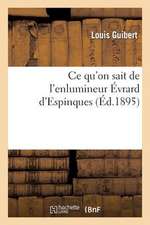Stitching the World: Embroidered Maps and Women’s Geographical Education: Studies in Historical Geography
Autor Judith A. Tyneren Limba Engleză Paperback – 25 apr 2018
| Toate formatele și edițiile | Preț | Express |
|---|---|---|
| Paperback (1) | 347.73 lei 22-36 zile | +17.47 lei 5-11 zile |
| Taylor & Francis – 25 apr 2018 | 347.73 lei 22-36 zile | +17.47 lei 5-11 zile |
| Hardback (1) | 1002.63 lei 43-57 zile | |
| Taylor & Francis – 28 mar 2015 | 1002.63 lei 43-57 zile |
Preț: 347.73 lei
Nou
Puncte Express: 522
Preț estimativ în valută:
66.54€ • 69.65$ • 55.38£
66.54€ • 69.65$ • 55.38£
Carte disponibilă
Livrare economică 10-24 martie
Livrare express 21-27 februarie pentru 27.46 lei
Preluare comenzi: 021 569.72.76
Specificații
ISBN-13: 9781138546981
ISBN-10: 1138546984
Pagini: 196
Dimensiuni: 156 x 234 x 16 mm
Greutate: 0.32 kg
Ediția:1
Editura: Taylor & Francis
Colecția Routledge
Seria Studies in Historical Geography
Locul publicării:Oxford, United Kingdom
ISBN-10: 1138546984
Pagini: 196
Dimensiuni: 156 x 234 x 16 mm
Greutate: 0.32 kg
Ediția:1
Editura: Taylor & Francis
Colecția Routledge
Seria Studies in Historical Geography
Locul publicării:Oxford, United Kingdom
Cuprins
Contents: Preface; Introduction; In the beginning was the sampler; British Isles traditions; Stitching a new nation; The world in silk; Needles and pens; Appendices; Bibliography; Index.
Notă biografică
Judith A. Tyner, is Professor Emerita at California State University, Long Beach, USA.
Recenzii
"Overall, Tyner’s research is fascinating (embroidered silk globes!), a combination of occasionally detective-like research and curious material culture. The work can be beneficial both for pleasure reading and for the classroom." - Rebecca A. Buller, University of Nebraska - Lincoln
"[T]he book's tables and visual documentation offer a new resource for students interested in the material culture of cartography and education history." - Martin Brückner, University of Delaware, USA, Journal of Historical Geography 55
"This volume has much to recommend it. First, it legiti-mizes the place of map samplers as an important part of history of cartography. Second, it gives recognition to the contributions of young women to the history of cartogra-phy. Third, the book is structured to have a wide appeal, so as non-cartographers pick up this volume, a new audience will be introduced to the fascinating discipline of cartog-raphy. And finally, I think it will encourage others—my-self included—to search for embroidered maps in their local communities, and will ultimately make it possible to find many more embroidered map masterpieces in muse-ums and historical societies and attics." - Karen M. Trifonoff, Professor Emerita,Bloomsburg University of Pennsylvania, Journal Cartographic Perspectives
’This unusual book concerns needlework map samplers and silk embroidered globes made in an earlier time, especially by young women in both Britain and the US. ... A fascinating excursus. Summing Up: Recommended. Upper-division undergraduates and above.' Choice ’Map samplers and needlework globes worked by young girls as part of their geographic education finally receive the attention they deserve in this well-crafted volume. Tyner’s attention to detail and use of primary sources make this a must read for needlework and cartographic historians and enthusiasts.’ Karen M. Trifonoff, Bloomsburg University, USA ’Stitching the World is the definitive scholarly study of an intriguing but little known cartographic genre-needlework maps and silk embroidered globes. Drawing on more than 20 years of museum visits and discussions with dealers in Britain and North America, Tyner serves up a highly readable, richly illustrated investigation of map samplers and the women who made them.’ Mark Monmonier, Syracuse University, USA ’With her background in cartography and her previous research on women in mapmaking, Judith Tyner’s book Stitching the World: Embroidered Maps and Women’s Geographical Education gives us a fascinating new perspective to the study of needlework. Bringing together examples from both Britain and America, this book documents known examples and provides a rich contextual analysis of their role in the education of women.’ Linda Eaton, Winterthur Museum, USA
"[T]he book's tables and visual documentation offer a new resource for students interested in the material culture of cartography and education history." - Martin Brückner, University of Delaware, USA, Journal of Historical Geography 55
"This volume has much to recommend it. First, it legiti-mizes the place of map samplers as an important part of history of cartography. Second, it gives recognition to the contributions of young women to the history of cartogra-phy. Third, the book is structured to have a wide appeal, so as non-cartographers pick up this volume, a new audience will be introduced to the fascinating discipline of cartog-raphy. And finally, I think it will encourage others—my-self included—to search for embroidered maps in their local communities, and will ultimately make it possible to find many more embroidered map masterpieces in muse-ums and historical societies and attics." - Karen M. Trifonoff, Professor Emerita,Bloomsburg University of Pennsylvania, Journal Cartographic Perspectives
’This unusual book concerns needlework map samplers and silk embroidered globes made in an earlier time, especially by young women in both Britain and the US. ... A fascinating excursus. Summing Up: Recommended. Upper-division undergraduates and above.' Choice ’Map samplers and needlework globes worked by young girls as part of their geographic education finally receive the attention they deserve in this well-crafted volume. Tyner’s attention to detail and use of primary sources make this a must read for needlework and cartographic historians and enthusiasts.’ Karen M. Trifonoff, Bloomsburg University, USA ’Stitching the World is the definitive scholarly study of an intriguing but little known cartographic genre-needlework maps and silk embroidered globes. Drawing on more than 20 years of museum visits and discussions with dealers in Britain and North America, Tyner serves up a highly readable, richly illustrated investigation of map samplers and the women who made them.’ Mark Monmonier, Syracuse University, USA ’With her background in cartography and her previous research on women in mapmaking, Judith Tyner’s book Stitching the World: Embroidered Maps and Women’s Geographical Education gives us a fascinating new perspective to the study of needlework. Bringing together examples from both Britain and America, this book documents known examples and provides a rich contextual analysis of their role in the education of women.’ Linda Eaton, Winterthur Museum, USA
Descriere
The period from the late eighteenth century until about 1840 coincided with major changes in educational theories and practices, especially for girls, and this book uses needlework maps and globes to chart a broader discussion of women's geographic education. In this light, map samplers and embroidered globes represent a transition in women's education from 'accomplishments' in the eighteenth century to challenging geographic education and conventional map drawing in schools and academies of the second half of the nineteenth century.

































